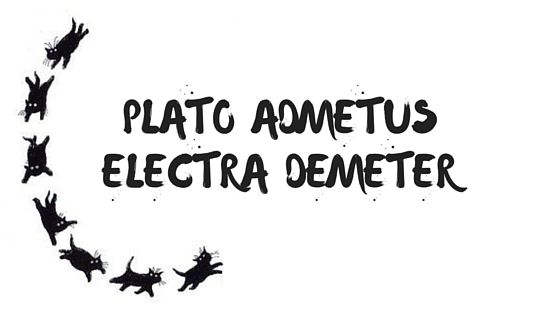 |
| Inspiration :: Heather (painting of heather on the Yorkshire Moors) |
Introduction
Flower names are amongst the most feminine names you can give your daughter. Arboreal and other nature names such as Rowan or Clay are used for boys but flower names are mostly exclusively for girls. They were extremely popular along with jewel names such as Ruby in the Victorian and Edwardian era and are recently on the rise.
Method
I looked at the top 100 names four years (eg. 1904, 1924) into each decade for each gender. The following chart shows all the flower names from those years. The arrows represent the years that each name was in the top 100.
Analysis
Flower Names
Ivy, Lily, Rose and Violet were the staple flower names in this time period and were joined by Daisy (who dropped out of the top 100 after 1924) and Iris (who continued to be popular into the 1940s). These names all have a short, simple but pretty style which is probably why they have all returned to the top 100 recently. They make great siblings to some of the diminutive names I discussed last week eg. Elsie, Lily, Annie and Rose.
By 1954, Heather was the only flower name in the top 100. However, she never reached the top 50. For this reason and the beautiful moorland associations, I think she could make a comeback in the UK much earlier than other 1960s/70s names which seem very dated today.
Names with Flower Meanings
These names appeared in the top 100 and whilst they are not the names of flowers, they do have floral links in their meanings.
May :: She is an alternative name for a hawthorn flower and appeared in the top 100 from
1904-1934.
Samantha :: Samantha is a feminisation of Samuel with the added bonus of the -anth- element which means flower in Greek which makes her a flower name in disguise. You may be more familiar with the -anth- element in names like Iolanthe and Ianthe which relate to the violet. Samantha featured in the top 100 names from 1964-1994.
Maryam :: This Arabic and Persian form of Maria is also the word for a tuberose in Iran. She appears in the top 100 in 2014.
Ivy, Lily, Rose and Violet were the staple flower names in this time period and were joined by Daisy (who dropped out of the top 100 after 1924) and Iris (who continued to be popular into the 1940s). These names all have a short, simple but pretty style which is probably why they have all returned to the top 100 recently. They make great siblings to some of the diminutive names I discussed last week eg. Elsie, Lily, Annie and Rose.
By 1954, Heather was the only flower name in the top 100. However, she never reached the top 50. For this reason and the beautiful moorland associations, I think she could make a comeback in the UK much earlier than other 1960s/70s names which seem very dated today.
Names with Flower Meanings
These names appeared in the top 100 and whilst they are not the names of flowers, they do have floral links in their meanings.
May :: She is an alternative name for a hawthorn flower and appeared in the top 100 from
1904-1934.
Samantha :: Samantha is a feminisation of Samuel with the added bonus of the -anth- element which means flower in Greek which makes her a flower name in disguise. You may be more familiar with the -anth- element in names like Iolanthe and Ianthe which relate to the violet. Samantha featured in the top 100 names from 1964-1994.
Maryam :: This Arabic and Persian form of Maria is also the word for a tuberose in Iran. She appears in the top 100 in 2014.
I wonder which flowers will make the top 100 over this decade. We have seen the comeback of flower names from the early 1900s and I wait in hope for the resurgence of Heather. But will parents ever be brave enough to make Zinnia and Amaryllis seem ordinary? I am intrigued to find out.
Please check out the Plato Admetus Electra Demeter pinterest board here where I will share lists and infographics related to the posts.







